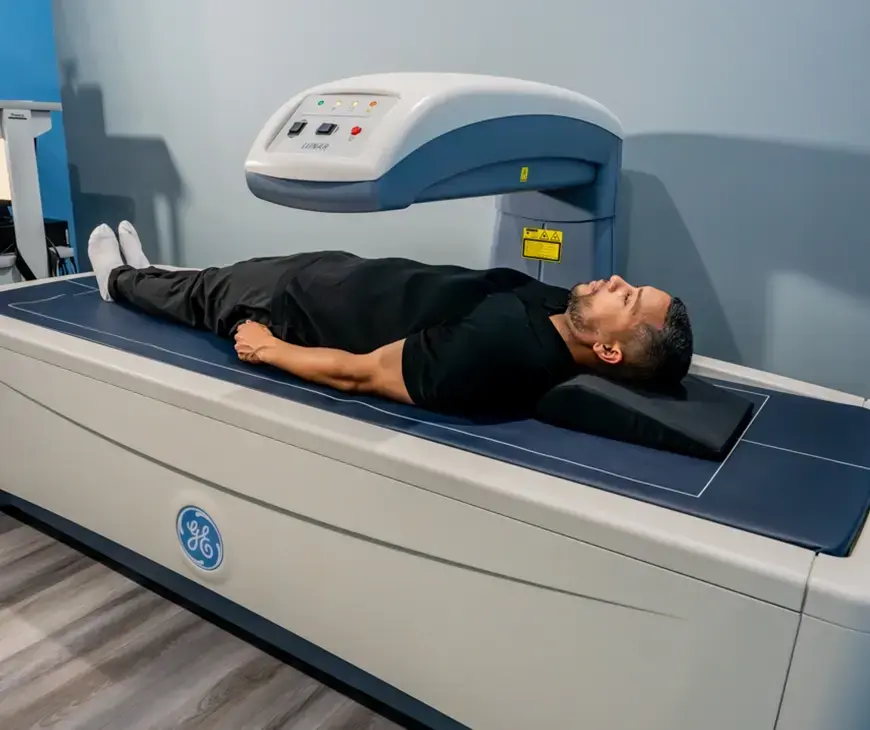Body Composition Analysis: A Guide to Understanding Your Fitness
- Pauline Decoster
- Jul 16
- 4 min read
Updated: Jul 21
Fitness enthusiasts and health-conscious individuals often focus on weight as a measure of health. However, simply tracking weight can be misleading. A more effective approach is to consider body composition, which looks beyond the scale. In this guide, we will delve into the significance of body composition analysis and how it can transform your fitness journey.
Fitness Body Analysis: What You Need to Know
Before diving into body composition analysis, it is essential to understand what it encompasses. Fitness body analysis helps determine the ratio of fat to lean mass in your body. This ratio enables a clearer picture of your health and fitness level than weight alone provides.
Imagine two individuals weighing the same but having different body compositions. One may have a higher muscle mass, while the other might carry more body fat. This difference can lead to varying health risks, energy levels, and overall performance. Therefore, understanding body composition is crucial in creating effective fitness goals and tracking progress.

The Components of Body Composition
Body composition is generally divided into two main components: fat mass and lean mass.
Fat Mass
This refers to all the fat in your body, which includes essential fat (necessary for bodily functions) and storage fat (the excess fat your body uses for energy). Essential fat is vital for maintaining hormone levels and protecting your organs. However, excess storage fat can lead to health issues, such as heart disease and diabetes.
Lean Mass
Lean mass includes muscles, bones, organs, and fluids. It is generally viewed as the metabolically active part of your body. Higher lean mass can improve overall metabolism, making it easier to maintain or lose weight. Individuals with more muscle mass typically enjoy better strength and endurance.
What is the Body Composition Analysis?
Body composition analysis refers to various methods used to assess an individual's body composition. Common techniques include:
Bioelectrical Impedance Analysis (BIA): This method sends a harmless electrical current through the body measures resistance across tissues. It helps estimate body fat and lean mass.
Dual-Energy X-ray Absorptiometry (DEXA): Originally designed for measuring bone density, DEXA scans also provide detailed body composition metrics.
Skinfold Measurements: By using calipers, trained professionals measure the thickness of skinfolds at specific body locations. These measurements are then used to estimate body fat percentage.
Hydrostatic Weighing: Often referred to as underwater weighing, this technique involves weighing an individual in water and calculating body density for body fat estimation.
These methods vary in complexity and cost, but they all serve the same purpose: to provide a clearer picture of your body and health status.

How to Use Body Composition Analysis in Your Fitness Journey
Understanding your body composition is only the first step. Here’s how you can effectively incorporate the findings into your fitness journey:
Set Target Goals
After obtaining your body composition results, set realistic and specific fitness goals. For example, if you learn that your body fat percentage is high, a possible goal could be to reduce it through a combination of exercise and dietary changes. Setting specific target percentages can provide motivation and a clearer path to success.
Tailor Your Nutrition
Nutrition plays a crucial role in achieving desired body composition. Focus on consuming whole foods rich in nutrients. For those looking to increase lean mass, ensure adequate protein intake, which is essential for muscle growth. Conversely, if fat loss is a goal, consider a slight caloric deficit while maintaining a balanced diet.
Focus on Strength Training
One effective way to change body composition is through strength training. Incorporating resistance exercises helps build lean muscle mass, subsequently boosting your metabolism. Aim for a variety of strength training exercises that target all major muscle groups at least two to three times per week.

Monitoring Progress and Making Adjustments
Regular body composition analysis can help track your progress. Instead of solely focusing on weight, look at changes in fat mass and lean mass. This holistic view allows for necessary adjustments in your diet and exercise routine.
Check Progress Periodically: Aim to conduct body composition analysis every few months. This regularity helps provide an accurate picture of progress.
Adapt Goals as Needed: If you’re not achieving your targets, it might be time to reassess your approach. Changing workout routines or trying a new dietary plan may yield better results.
Final Words on Fitness Body Analysis
In conclusion, understanding body composition can significantly enhance your fitness journey. By focusing on the composition of your body rather than just weight, you can gain valuable insights into your health and performance. Consider implementing body composition analysis into your fitness plan for a more tailored approach to achieving your goals.
Make sure to consult a professional to determine the best body composition analysis method for you. Remember, gradual changes lead to lasting results, and your journey is unique to you.
For a tailored approach and accurate analysis, check out the body composition analysis resources offered by experts. It's time to take charge of your health and fitness in a more informed way!
























Comments